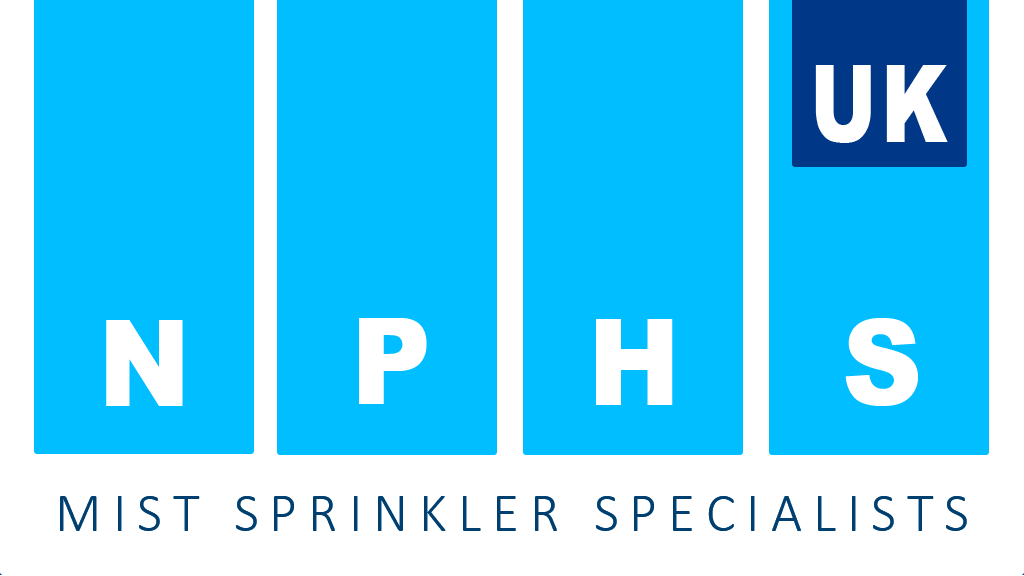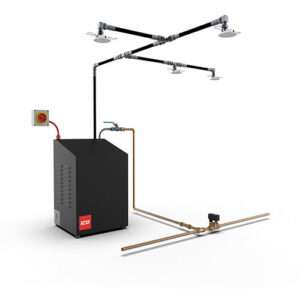Water mist systems are used in fire protection to provide a fire retardant. This is done by releasing a fine mist of water into the air. This mist will then suppress the flame and cool the surrounding environment.
Water mist system is used in buildings prone to fires, such as schools, hotels, churches, and apartments. Residential water mist systems are also used in facilities with open flame or combustible materials, such as gas stations or oil refineries.
Domestic and Residential Building Water Mist System
Water mist systems are a great way to prevent fires in residential and commercial buildings. They can also be used to suppress existing fires.
The water mist system is a fire protection measure that uses water as the medium for suppressing or preventing fires. The system consists of a container of water, an atomizer nozzle, and an air compressor. When the air compressor is turned on, it forces the compressed air through the nozzle, mixing with the water and creating tiny droplets of water (mist). The droplets are then sprayed into the room or building to be protected by an atomizing nozzle which breaks up the droplets into very fine particles of liquid that evaporates quickly when exposed to heat sources like flames or hot objects.
A water mist system is an alternative to household sprinklers for fire suppression. Water mist systems are a market-evolving technology responsive to minor design modifications. Therefore, successfully implementing a water mist system requires an in-depth knowledge of the system and its intended application.
A water mist system is a permanent fire prevention system that includes automated detection and actuation components, water supply, distribution, and atomization. The operational nozzle of a water mist system sprays a spray of tiny water droplets. A system is intended to create, distribute, and retain a concentration of small droplets long enough to control and extinguish a fire while meeting fire prevention objectives. Water mist systems for domestic and residential buildings are devices that control or reduce fires.
Water mist systems are classified as low pressure (less than 12 bar), medium pressure (12 to 35 bar), or high pressure (more than 35 bar) (above 35 bar, often circa 100 bar). The pressure of a water mist system is closely tied to the safety considerations of the installation. Low-pressure systems are often regarded as a lesser risk, but medium and high-pressure systems provide more of a challenge and require more stringent risk evaluations. Water at pressure and projectiles are two occupant hazards that should be considered throughout the system’s lifespan. Possible sources of these dangers include trapped air, loose connections, insecure fittings, nozzle obstruction, system damage, and occupant contact. Therefore, specific mitigation measures should be formally addressed for a domestic and residential occupancy with a high pressure water mist system or one with stored pressure cylinders.
The Pressure Equipment Directive (PED) applies to the design, manufacture and conformity assessment of pressure equipment and assemblies of the pressure equipment with a maximum allowable pressure greater than 0.5 bar, with the conformity requirements for manufacturing, design and installations becoming more demanding with increasing stored energy i.e. pressure times volume. The Construction (Design and Management) are intended to ensure health and safety issues are properly considered during a project’s development, reducing the risk of harm to those who have to build, use and maintain structures. Domestic clients (non-commercial clients) have tasks and obligations, as do commercial clients, normally passed to the contractor to ensure all hazards are considered and mitigated. This could include ongoing maintenance of mitigating risk items required by the domestic client. When installation benefits were discovered, high-pressure systems were chosen for domestic and residential structures in the United Kingdom. It should be emphasized that these systems will have continuous vital needs for people’s safety and any special risk mitigation procedures. Water mist systems are single-supplier systems; each supplier’s product is distinctive, as are each installation and design. For example, swapping components (such as nozzles) from one manufacturer into an installation built for components from another company is often not viable.

